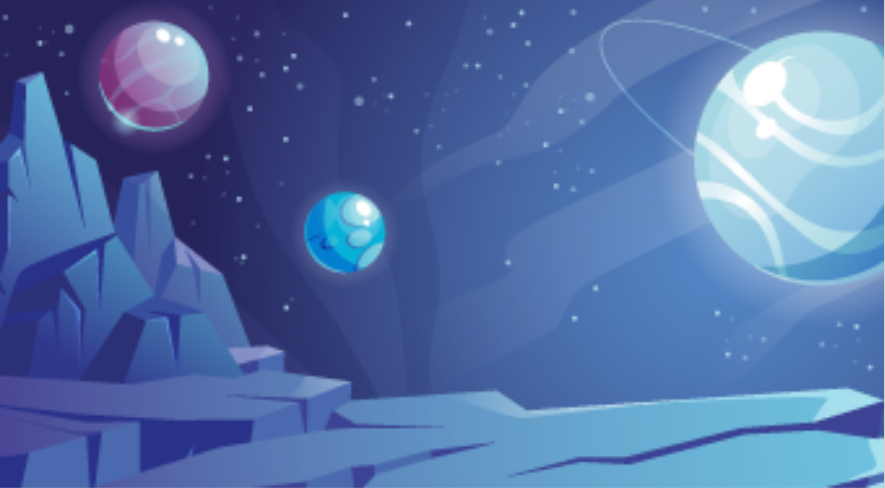
This blog features insights from author Ganesh Swaminathan. After completing his engineering from IIT Delhi and MBA from IIM Ahmedabad, he spent most of his professional life in a multinational organisation in the field of technology. About eight years ago, he developed an interest in the Puranas. He was fascinated by the insights the ancient text offered, particularly the parallels to space science and has further researched most of the Mahapuranas, besides other texts. He is the author of the book, From the Beginning of Time, which presents the world of Modern Science & the Puranic Universe.
Read on.
As a child, I grew up with stories from the Ramayana and the Mahabharata but was not even aware of a set of texts from about 2,000 years ago called the Puranas. At school, I was a student of science with keen interest in the space sciences. But the worlds of the ancient Indian texts and the sciences were different universes with no overlap.
Many years later, I recall watching a segment about the Moon in a TV serial based on the Shiva Purana. The Moon was married to the 27 daughters of Daksha but spent all his time with just one of them, Rohini. The other sisters complained to their father, who, in his anger, cursed the Moon to atrophy and disappear. The Moon then propitiated Shiva and promised to treat all his wives equally. As a result, he waned for two weeks and waxed for two. If the intent here was to educate us to treat our dependants equally, I recall wondering why the story had 27 wives? There was a lot about our texts that did not seem intuitive.
A few years ago, following a discussion on the different versions of the Flood story in the various cultures, I decided to read the Matsya Purana, the Indian version. I found the text to be of great sophistication and an excellent read. I followed it up with the Shiva, Bhagavata and the Brahmanda Purana, and in the process better understood the story of the Moon.
The 27 wives of the Moon are the 27 constellations of the Indian Nakshatra system. A lunar month is 27.3 days long, and each day, the Moon rises in a different part of the sky as it orbits the Earth. As a result, it is seen near a different constellation at dawn each day, leading to the story that it spent the night with that constellation, its ‘wife’!
However, what was truly fascinating in the Puranas was the description of the life cycle of the Sun. Our Sun has a life of about ten billion years and a five-stage life cycle comprising Birth, Youth, current Mature stage, a Red Giant, and finally, a White Dwarf. What caught my eye was the description of the Red Giant Sun.
In a few billion years, the Sun as a Red Giant would grow so large that it would engulf the nearby planets of Mercury and Venus and end up burning the Earth. The process is described step-by-step, starting with the Sun’s heat causing a drought on the Earth, the oceans boiling off, and finally, the Earth literally glowing due to the heat of the Sun.
When the Sun stops producing energy, it collapses to become a White Dwarf. This leads to rapid cooling of the Earth, with the water boiled off the oceans forming giant clouds. The incessant rains that follow flood the Earth as the Pralaya. The Sun’s birth is in the story of Martanda being born to Kashyapa and Aditi.
The Puranas do not just talk about the Sun and the Moon; they describe the Solar system or the Puranic equivalent, the Brahmanda, the Cosmic Egg. That said, none of the Indian texts make any mention of Uranus or Neptune. The Brahmana, at its widest part, is described as 50 crore yojana, which translates to the distance to Uranus.
The Brahmanda is also depicted as being covered by three material sheaths of water, fire and wind. It is hard to imagine this in the emptiness of outer space, but this is indeed true. It is now accepted that our solar system is surrounded by a shell-like region of space called the Oort Cloud. This region is filled with frozen volatiles like ammonia, methane and yes, water! Some of the comets that visit the central solar system originate from here.
It is even harder to imagine a sheath of fire in the bitter cold of outer space. And yet, this is what the Voyager probes launched over 40 years ago found, less than two years ago. The spacecraft ran into a wall of fire, called the heliosheath, as they exited the solar system. An internet search with the words ‘NASA wall of fire’ will reveal more detail. I like to think that if the scientists at NASA had taken the time to read the Puranas, they might have planned better for this event!
The Puranas, therefore, are not just texts of religion and philosophy; they also include a lot of the sciences, one of which is cosmology. And it is fascinating that the texts contain such precise specifics about the Universe that we are, even now, discovering.

